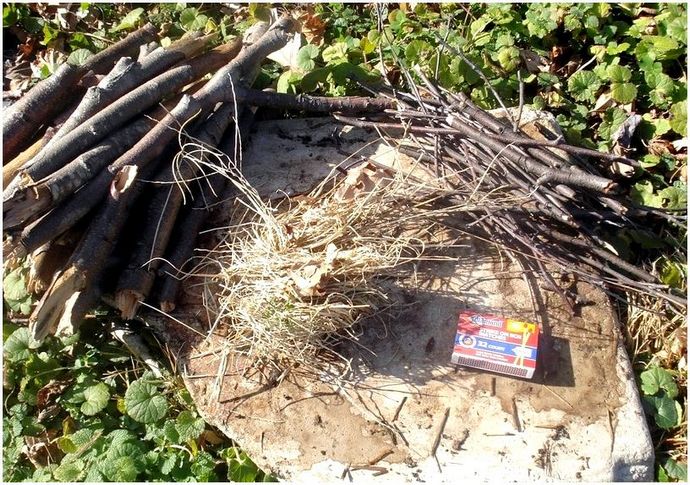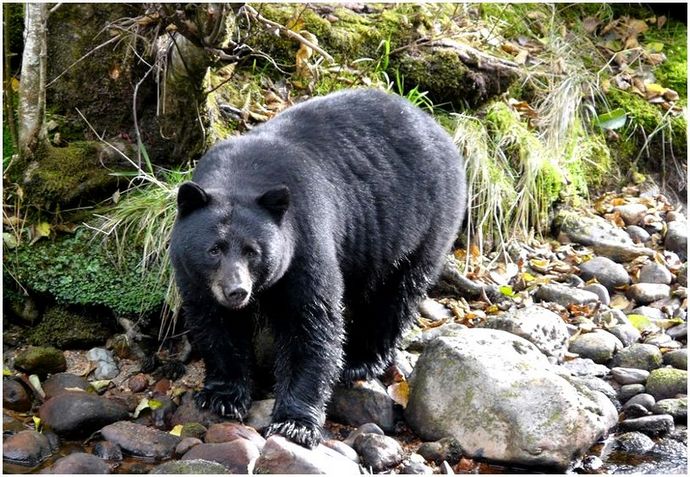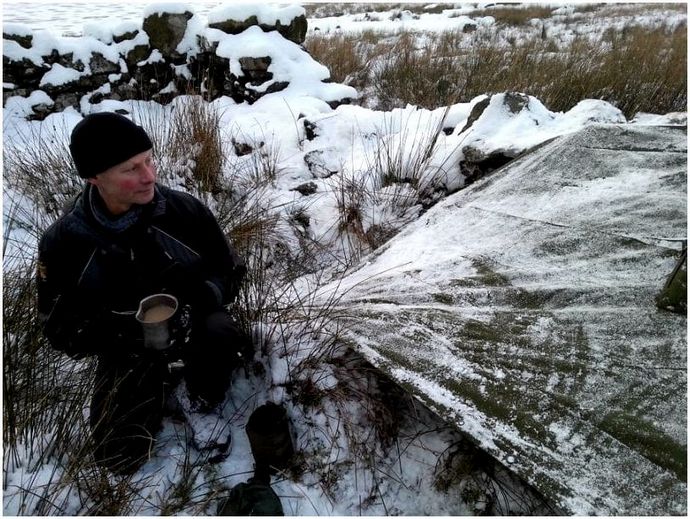Surviving in Forest

Main guidance to survive in the forest
Before officially admitting that you are lost, try Get back to your steps. Find out if you can recognize objects or objects left behind and try to return. This should be your first step. And don't be afraid. This can confuse you even more, and you will completely lose clues, and the chances of finding your way back will be lost. So stay calm and try to think rationally.
Be very focused on your whereabouts. While walking (and you are not lost) it is a good habit to try to pay attention to details; Turn around a few times and try to remember the area. It will take no more than a few minutes, but do it regularly. This technique can help you find your way in case you get lost.
If you are absolutely sure that you are lost, you should follow some steps, master some tricks and, as mentioned above, stay calm.
Your first and very important step ; to find. water . This is vital as you can build a shelter close to a water source and even set up a few traps that can provide you with food. A good tip to help you find water is to look for birds and not fly around. Birds and other animals stay close to water sources.
Another thing that can help you is looking for animal tracks, as there are several established paths. Be careful not to enter any animal's den. Search for trails it is just a suggestion to find water sources. Search for birds and trails. Both are more reliable when combined.
If you find a source of water, it could be a river, stream or lake . Always remember to boil water before drinking it. If you have a filter or purification system, this might be even better. Therefore, we recommend that you have a filtration / purification system. But if you don't have this type of system, boil the water for at least 3-4 minutes. At best, cook for 10 minutes. If you are at high altitude (and you stay in the forest), it boils for over 10 minutes. This is due to the lower atmospheric pressure, so the water boils more slowly.
If there is absolutely no source of water around you (and don't dare look too far ahead because you can waste too much energy and dehydrate quickly), try harvesting rainwater or dew. If you do not boil water, but if they are using dirty containers or pots.
Although you don't have to wait for rain.Since you are in the forest, there is a lot of moisture in the air. This also means you can use foliage to make your own solar water yet . In order to make one, you must first dig a hole. Make sure it is deep so that you can place a bowl or pot in the center and the opening is generally much higher than the containers. Place inside a pile of leaves and foliage. Cover the entire mounting hole with a plastic sheet.
To keep it stable, place heavy stones at each corner of the sheet. And make sure the blade is slightly loose (not fully extended). Finally, place a smaller rock or rock in the plastic sheet just above the container pot. Over time, water will begin to evaporate inside the hole due to the greenhouse effect. The vapor will condense inside the plastic sheet and drip where the small stone is. The water will be completely clean (distilled) and ready to drink if your pots are also clean.
Next, you need to find a place for a hideout . We strongly recommend that you carry at least one canvas with you, as it is reusable, very practical and lightweight. It can save your life, protect yourself from heavy rain or heavy snow. Without a tarp or shelter, you cannot survive for a long time, fully exposed to the elements. Learn to build shelters with tarps. Practice before going to the forest to get ready.
If, after everything, forget to bring a tarp in your backpack, you can try to create your own shelter with tools, branches, leaves, etc. you can find in the forest. This may require you to have a lot more skill to build a shelter, so grab a tarp (or skip the hardest part) or learn how to make a primitive shelter beforehand. It is very light and shelter type oblique . This can be done with canvas or just a few branches and foliage.
If you don't have a tarp, do the following. Find a long, thick branch. Support it against the tree, at a 45 degree angle. Place smaller branches on both sides. It should look like a spine with a ribcage. Then place foliage, larger leaves, and thinner branches. Try to cover everything and chest.
Of course, if you don't have the skills to build shelters, you can even trust what nature has to offer: caves . This can be much more dangerous, so be prepared. You may already be passengers in front of cave bears, wild cats, snakes, etc. These animals also depend on any kind of cave or hole in the ground to survive, so you may have found yourself in front of you.
When you have created your hideout, you need light a fire It will give you warmth, and it will be yours and # 8216; kitchen. You can cook food and boil water. If you run out of food supplies, you will have to take your own food. This may require you to know how to cheat or fish. There are many tutorials on the Internet that show you how to do this. This is a very useful skill to learn before the hike.

There are several useful ways to start a fire (if you don't have a lighter on hand). You can use a mirror to illuminate some forests and branches. Or you can build a fire plow. You will need a piece of soft wood to cut through. Place the tree and branches in it and use a thinner branch to move it up and down to create friction. Make sure the wood and branches are dry. Even a small amount of moisture can prevent a fire. However, when this happens, place more branches to make the fire grow.
Remember that the material you are using must be dead branches and dead branches; It can be anything as long as it's dead. You also need to keep a small fire because it is more controllable. Large fires require more fuel and are more difficult to maintain, especially if you have little experience. Also, start lighting a fire away from dead trees or shrubs, or near foliage or leaves. If conditions permit (warm and windy weather), you can ignite a forest fire by mistake.
How to increase your chances of survival
We need to add some very useful tips to survive in the forest. The above steps are absolutely essential for survival and must be done. Along with that, you need to know something else.
You have to tell someone where you are going. Never be mistaken in a movie and. If you are lost, your main hope is that your friend or family member knows that you are on a field trip. Let them know exactly what you plan to do and where you are going. That way, if you're lost, your rescuers will have a rough idea of where to look for him. This is why you also need to be aware of some warning signs, such as a fire signal, flashlight, whistle or shout. You can also use trees and mark them.
It is very important that you bring a map, compass, GPS system or smartphone. Any of them can be very useful to you if no one knows your location. First, learn to use the map and compass. If your GPS or smartphone batteries are low, you will have to use the traditional way of reading the map.
Don't move a lot. It will be easier for rescuers to find you. Of course, you can explore the area you are in, get to know it better. If you are sure that no one will come for you, you will have to leave the forest. If you've found a sequence, your best bet is ; just walk over it. Hopefully this will lead you to civilization or to a larger body of water. Also, since they will leave at their own pace, always travel during the day, and when darkness falls, seek refuge and rest all night.
It should also be remembered that if you wander through the forest,you should also be prepared to look for animals. Usually these would be bears or feral cats (perhaps even wolves). Get ready by carrying the knife with your hand. If you forget to take one, try to make your own using some branches of the forest and make an impromptu spear using sharp stones. Of course, you shouldn't actively participate in a fight. Always avoid battles until there is no way out.

If you come across a bear face to face, speak in a low voice, stretch your arms out to make it look bigger (you need a place for the bear to feel scared), and walk slowly. Don't run because bear instincts ; run after prey (and catch it). Bears are very fast and you will have little chance of overcoming them. Therefore, avoid close contact with animals and do not be the first to attack.
If you encounter a grizzly bear, play dead. They will not be interested in you if they think you are dead. Only leave the area when you are sure the bear is out of sight. If it's a black bear, you will have to fight everything you have at hand. Tricks won't do you any good. Or slowly withdraw from combat if he attacks you immediately.

Other animals you should be careful with are insects and small reptiles. Due to their size, they can get caught in your clothes and sleeves, so keep them tight and avoid skin exposure.
Also, be very careful with what you eat. If you do not have food, you must trust what the forest provides. These can be small animals or plants. The latter can be poisonous, unfortunately. If you are unfamiliar with the plant world, you should avoid eating. If you're absolutely sure you can see blueberries, eat them. There are white berries that are poisonous.
Also keep in mind that brightly colored fruits (yellow, white, red) can be poisonous (red, they can sometimes be edible, but this is a risk if you are not sure). The dark blue and purple fruits are mostly edible. Mushrooms are also unnecessary if you don't know what you are doing. Better to learn how to cheat and catch wild rabbits or other small forest animals.
If you plan to walk in the forest for some time, we recommend that you read in advance what plants and species grow in the area. Learn about which plants, mushrooms and fruits are edible and which are not. It can also be a good idea, even if you are not lost.
The four safe foods we can mention here are oak, acorn, pine, totora and grass. Acorns are easy to find and store. Pine nuts and inner bark are also edible. To add some flavor to the water, you can boil a few pine needles. Add sweets to the water. Surprisingly enough, the hives are quite edible. All parts of it can be used. And finally, the herb: it can be chewed thick, but it contains carbohydrates and starch.
Last but not least, maintain a certain level of hygiene. If you’re in the woods for a while and don’t know when you’ll be rescued (or find your way home), you will have to take care of your personal hygiene needs. Plaque can cause inflammation, pain and bleeding of the gums, which can be very annoying and can be a fertile breeding ground for germs and bacteria.

Also, keep your body clean, especially areas such as armpits, private organs, between toes, skin folds. This is because bacteria build up and can cause rashes, allergies, inflammation, all of which can lead to illness.
The last and very important tip learn to provide first aid. If you've prepared a first aid kit, that would be ideal. Make your own home guide on how to use it and in which situation to use which item. It can be more difficult to perform the first aid technique without any element on hand. It may be difficult for you, but if you are alone in the forest, you need to know how to treat your own burns, fractures, and cuts. These three the most basic injuries you may face, if any.
And don't forget to scream and try to get attention. Schedule a routine to shout, whistle, or use a flashlight at night. Also, do not forget that the fire you built can also attract the attention of the rescue team.
As long as you are familiar with these techniques and methods of survival, you have every chance of finding your way home. You need to know that the forest provides a means of survival, you just need to know how to use it. Know your area; Leave footprints in trees wherever you go; plan your food and water well (find a water source or use solar water for now) stay away from animals, stay away and only hunt small animals (use traps or hooks) When you are on the trail, use signs to help people find you (if no one knows where you are).
If your friend or relatives have already notified the rescuers of your whereabouts (and you know they are looking for him), stay. Don't forget the pocket knife, it is a great help wherever you go in the desert.

